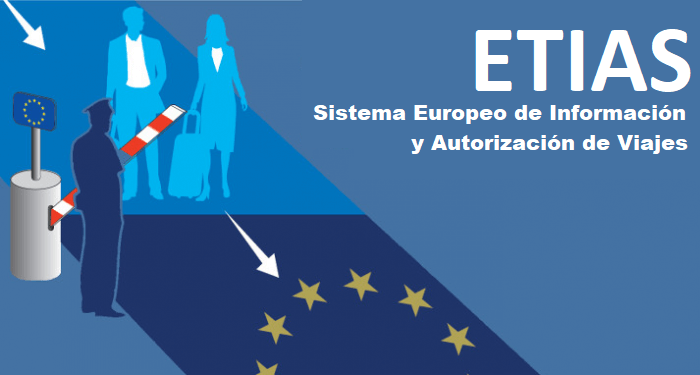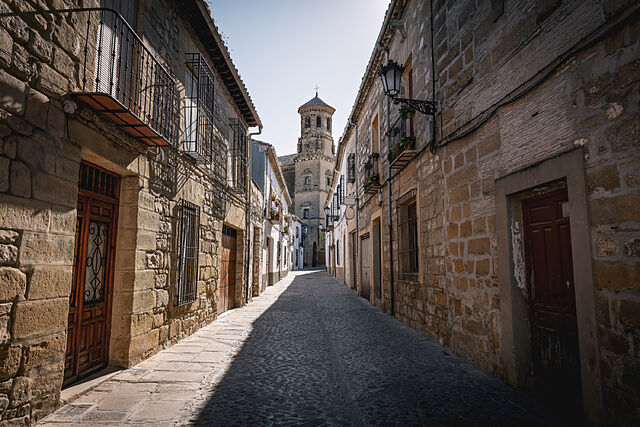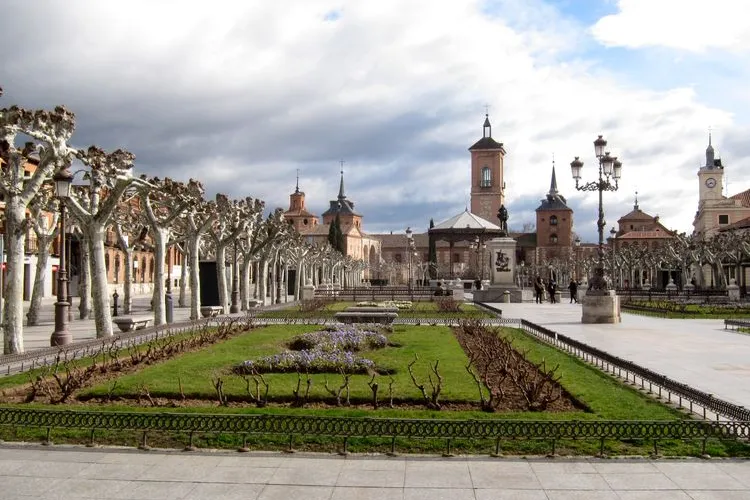Spain continues to be a highly sought-after destination for tourists, workers, and those seeking to relocate permanently. With its rich cultural heritage, stunning landscapes, vibrant cities, and Mediterranean climate, it’s no wonder that Spain remains at the top of many travelers’ lists. However, like any country, Spain has specific entry requirements that visitors must meet to gain admission.
This comprehensive guide outlines everything you need to know about entering Spain in 2025, whether you’re planning a short tourist visit, a business trip, or considering a longer stay.
Essential Entry Requirements for Spain in 2025
According to Vicente Marín, attorney and expert in Immigration Law and Spanish Nationality, and director of Portal Parainmigrantes.info, all travelers seeking to enter Spain in 2025 must fulfill the following requirements:
1. Valid Passport or Travel Document
The most basic requirement for entering Spain is having a valid passport or travel document. Make sure your passport has sufficient validity beyond your planned stay. While specific requirements vary by nationality, it’s generally recommended that your passport be valid for at least three months beyond your intended departure date from the Schengen Area.
2. Return Ticket
Spanish immigration authorities require proof that you plan to leave the country. A return ticket or onward journey ticket serves as evidence of your intention not to overstay. This can be an airline ticket, bus ticket, or train reservation showing your departure from Spain or the Schengen Area.
3. Sufficient Financial Means
You must demonstrate that you have enough money to support yourself during your stay in Spain. For 2025, the specific requirements are:
- A minimum of €118.40 per person per day (10% of the Spanish Minimum Interprofessional Salary)
- Regardless of the duration of your stay, you must have at least €972 or its equivalent in foreign currency
These financial means can be verified through:
- Cash
- Traveler’s checks
- Credit cards accompanied by bank statements
- Up-to-date bank books
- Any other means that prove the availability of funds
It’s important to note that Spanish authorities do not accept letters from banking institutions or internet bank statements as proof of financial means.
4. Accommodation Arrangements
Travelers must provide evidence of accommodation for the entire duration of their stay in Spain. This can be demonstrated through:
- Hotel reservations
- A letter of invitation from a host in Spain (Carta de Invitación)
A letter of invitation only proves that you have accommodation arrangements and does not substitute for the other entry requirements.
5. Travel Insurance
Visitors must have valid travel medical insurance that covers any potential expenses related to medical treatment, emergency hospital care, and repatriation for medical reasons. The insurance should provide coverage throughout the Schengen Area and have a minimum coverage of €30,000.
6. Purpose of Visit Documentation
Depending on the reason for your visit to Spain, you’ll need to provide documentation that justifies your purpose:
For business trips:
- Invitation from a Spanish company
- Documentation proving existing business relationships
- Access cards to trade fairs or conferences
For tourism or private visits:
- Confirmation of an organized tour reservation
- Proof of accommodation
- Letter of invitation from a private individual (which may indicate if it covers all or part of your meals)
For study, training, non-work internships, or volunteer programs (up to 3 months):
- Registration or proof of admission to an educational institution
- Internship agreement
- Proof of admission to a volunteer program
For other purposes:
- Invitations
- Reservations
- Program certificates or participation certificates
- Entry cards or receipts
7. Health Requirements
In certain circumstances, as determined by the Ministry of the Interior in consultation with the Ministries of Health and Labor and Immigration, travelers may be required to present a health certificate issued in their country of origin by medical services designated by the Spanish Diplomatic Mission or Consular Office. Alternatively, they may undergo a medical examination upon arrival at the border by competent Spanish health services.
This requirement aims to ensure that visitors do not have any infectious diseases that could pose serious public health concerns, in accordance with the 2025 International Health Regulations and international commitments on the matter subscribed to by Spain, without prejudice to European Union regulations.
Visa Requirements for Entering Spain
Spain is a member of the Schengen Area, which means that entry requirements are aligned with Schengen regulations. Depending on your nationality, you may need to obtain a short-stay visa (Schengen visa) before traveling to Spain.
Nationals Requiring a Visa
Citizens from countries not listed in the visa-exempt category must obtain a Schengen visa before traveling to Spain. This includes nationals from countries like Cuba, Ecuador, and the Dominican Republic.
If you require a visa, you should apply at the Spanish Consulate in your country of residence. The application process typically involves:
- Completing the Schengen visa application form
- Providing a valid passport
- Submitting photos that meet Schengen visa requirements
- Paying the visa fee
- Providing documentation of travel insurance
- Demonstrating sufficient financial means
- Providing proof of accommodation
- Submitting documentation for the purpose of your visit
Visa-Free Countries for Spain in 2025
Nationals from the following countries do not need a visa to enter Spain for short stays (up to 90 days within any 180-day period) for tourism, business, or transit purposes:
Albania, Andorra, Antigua and Barbuda, Argentina, Australia, Bahamas, Barbados, Bosnia and Herzegovina, Brazil, Brunei, Canada, Chile, Colombia, South Korea, Costa Rica, Dominica, El Salvador, United Arab Emirates, United States of America, Georgia, Grenada, Guatemala, Honduras, Israel, Japan, Kiribati, North Macedonia, Malaysia, Marshall Islands, Mauritius, Mexico, Micronesia, Moldova, Monaco, Montenegro, Nicaragua, New Zealand, Palau, Panama, Paraguay, Peru, United Kingdom, Solomon Islands, Samoa, Saint Kitts and Nevis, San Marino, Saint Vincent and the Grenadines, Saint Lucia, Holy See (Vatican City State), Serbia, Seychelles, Singapore, East Timor, Tonga, Trinidad and Tobago, Tuvalu, Ukraine, Uruguay, Venezuela.
Important Notes:
- The agreement between the European Union and Saint Lucia on visa exemption for short stays entered into force on November 1, 2023.
- The application of the agreement between the European Union and the Republic of Vanuatu on visa exemption for short stays has been suspended since May 4, 2022, for citizens of Vanuatu holding ordinary passports issued by Vanuatu from May 25, 2015. The exemption from the visa requirement for all nationals of Vanuatu is suspended from February 4, 2023, to February 3, 2025.
Even if you are a citizen of a visa-exempt country, you still need to comply with all the other entry requirements mentioned earlier in this guide.
Schengen Area Rules: The 90/180 Day Rule
For those traveling from countries that have visa-free arrangements with the Schengen Area, including Spain, it’s crucial to understand the “90/180 day rule.” This rule states that you can stay in the Schengen Area for a maximum of 90 days within any 180-day period.
This means:
- The 180-day reference period is not fixed but continuously moves forward
- For each day of your stay, you must look back 180 days to determine if the 90-day limit has been exceeded
- Stays are cumulative across all Schengen countries, not just Spain
Breaking this rule can result in fines, deportation, and potential bans from re-entering the Schengen Area for a specified period.
Entry Procedures at Spanish Borders
Upon arrival in Spain, you will go through border control, where officers will verify:
- Your identity through your passport or travel document
- That you meet all the entry requirements mentioned above
- That your purpose of visit aligns with the documentation you provide
- That you don’t pose a threat to public policy, internal security, public health, or international relations
Border control officers have the authority to:
- Stamp your passport (if you’re a non-EU citizen)
- Request additional documentation
- Ask questions about your trip
- Verify your financial means and accommodation arrangements
- Check your return or onward journey tickets
Restrictions and Special Considerations
COVID-19 and Health Measures
While the COVID-19 pandemic has evolved significantly since its onset, travelers should stay informed about any current health-related entry requirements. As of 2025, Spain may have specific health protocols in place, which could include:
- Vaccination certificates
- Negative test results
- Health declaration forms
- Contact tracing applications
It’s advisable to check the latest information on the official Spanish tourism website or with Spanish diplomatic missions before traveling.
Flight Restrictions
Occasionally, flight restrictions may be implemented due to various factors, including public health emergencies, geopolitical situations, or other safety concerns. Before booking your trip to Spain, ensure that there are no flight restrictions affecting your country of origin or transit countries.
Long-Term Stays in Spain
If you plan to stay in Spain for more than 90 days, you will need to apply for the appropriate long-term visa or residence permit. The requirements and application process vary depending on the purpose of your stay (work, study, family reunification, retirement, etc.).
Long-term visas and residence permits must be applied for at the Spanish Consulate in your country of residence before traveling to Spain.
Recommendations for a Smooth Entry into Spain
To ensure a hassle-free entry into Spain in 2025, consider the following recommendations:
- Prepare all required documentation in advance: Have both digital and physical copies of all your documents, including your passport, travel insurance, accommodation bookings, return tickets, and financial statements.
- Check visa requirements early: If you need a visa, apply well in advance of your travel dates, as processing times can vary.
- Calculate your stay correctly: If you’re a frequent traveler to the Schengen Area, keep track of your stays to ensure compliance with the 90/180 day rule.
- Secure comprehensive travel insurance: Ensure your policy meets the minimum requirements for Spain and covers COVID-19 related issues if applicable.
- Stay informed about current regulations: Entry requirements can change, so check for updates before traveling.
- Have contact information readily available: Keep contact details for your accommodation, emergency contacts, and the Spanish consulate or embassy in your home country.
- Learn basic Spanish phrases: While not an entry requirement, having basic communication skills can help in case of any issues at border control.
Entering Spain in 2025 requires careful preparation and adherence to specific requirements. Whether you’re visiting for tourism, business, or education, understanding the entry procedures will help ensure a smooth start to your Spanish experience.
Remember that border control officers have the final say on whether you may enter Spain, regardless of having the required documentation. Therefore, it’s essential to be honest about your travel plans and ensure you meet all the necessary criteria.
With its rich history, diverse landscapes, vibrant culture, and delicious cuisine, Spain offers an unforgettable experience for travelers from around the world. By preparing adequately for your trip and understanding the entry requirements, you can look forward to enjoying all that this beautiful Mediterranean country has to offer.
For the most up-to-date information on entering Spain, it’s advisable to consult the official websites of Spanish diplomatic missions or contact Portal Parainmigrantes.info, which specializes in providing accurate information on immigration matters.





